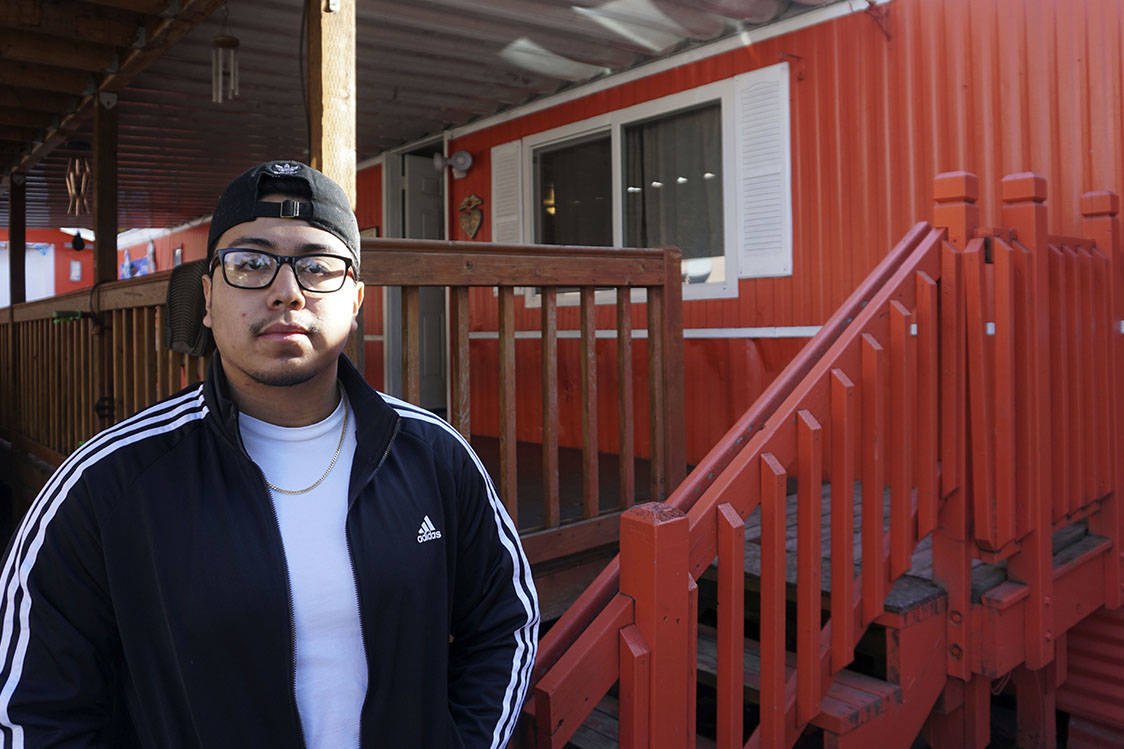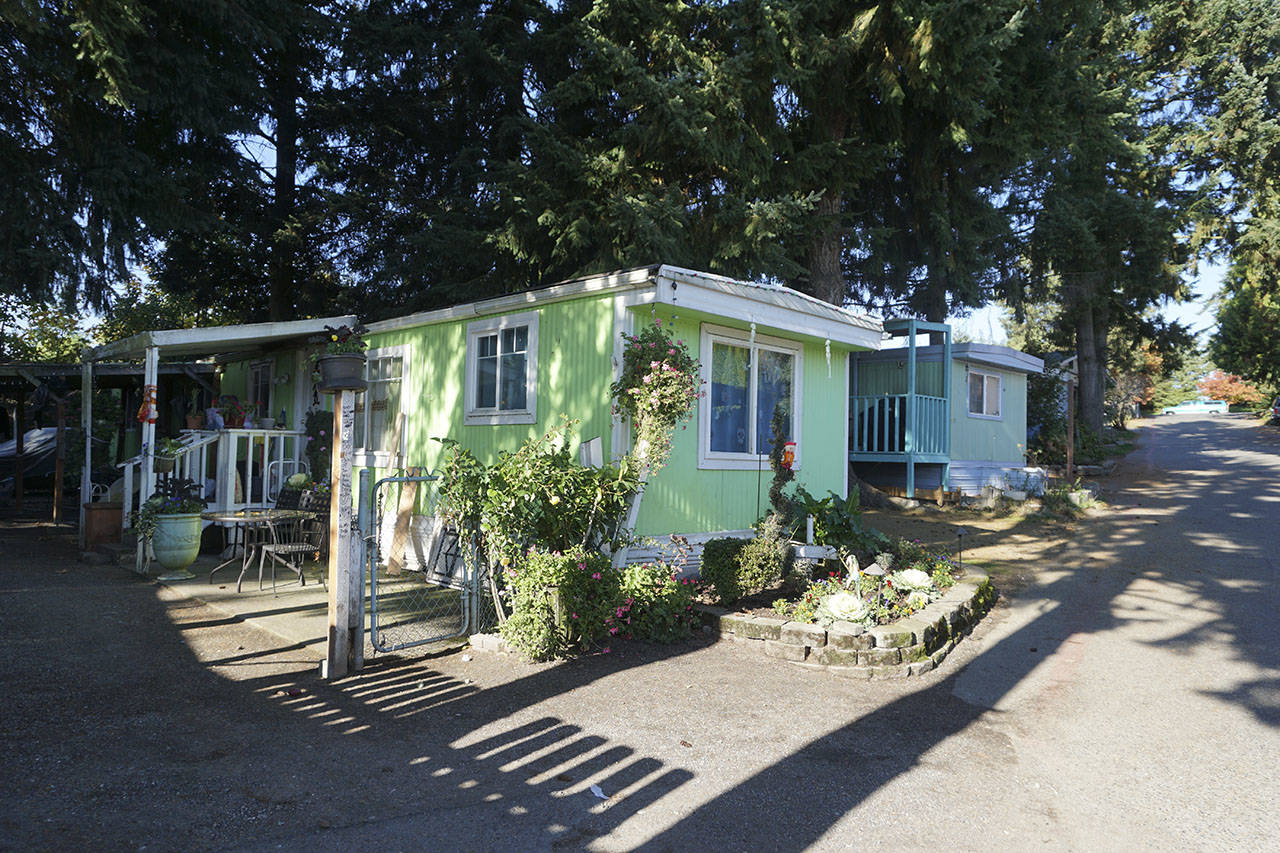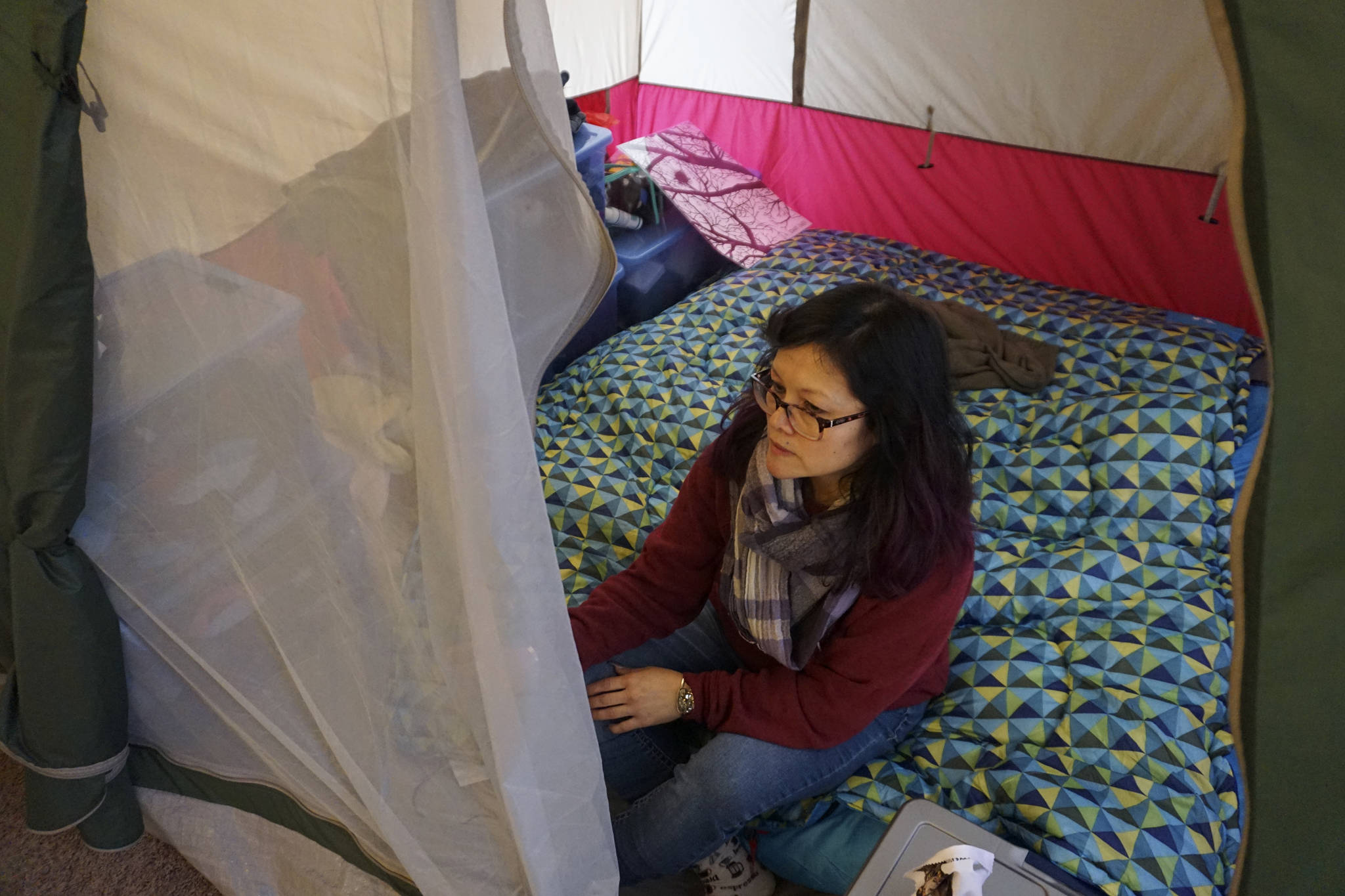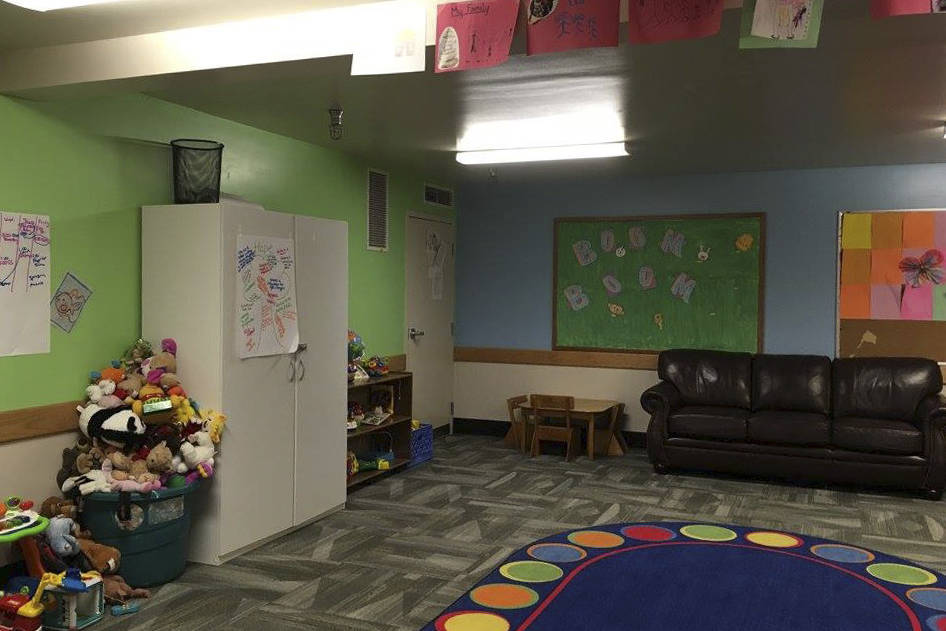On Monday afternoon at Firs Mobile Home Park in SeaTac, residents Luis Moreno and Cruz Medina huddle around a trailer as a small black puppy zigzags between their legs. The two haven’t begun packing their belongings yet, despite being issued a closure notice for the end of the month by property owner Jong Park, who is preparing the land for a hotel development. Medina, 62, says that he’s hopeful that he and the other residents will be able to purchase the property and maintain their mobile homes, which, contrary to their names, are nearly impossible to move.
“We all want to stay here; that’s why we don’t start looking,” Moreno, 36, says when asked if he or his neighbors have started searching for new places. In 2013, Moreno, a landscape worker originally from El Salvador, purchased his mobile home for $8,300 because he wanted a place close to work that he could call his own. He, like most of the other residents of the park, leases the land on which his home sits from Park.
Now, the property owner is offering Moreno and about 200 other residents $2000 for relocation costs. But Moreno and his neighbors says that it’s not enough.
The State also offers reimbursements to low-income residents for relocation expenses of up to $7500 for a single-section and up to $12,000 for a multi-section home. In an email to Seattle Weekly, SeaTac city councilmember Peter Kwon said that he informed the residents of this option and that he printed out copies of the applications in English and Spanish to distribute to the residents. Kwon and the Tenants Union of Washington State said that they are unaware of any tenants applying for the assistance.
While Seattle’s Housing crisis has ballooned in recent years, the city of SeaTac has long been considered a more affordable southern neighbor. The potential displacement of the mobile home owners signals the rapid development in other parts of King County and a loss of a low-income housing option, say housing rights activists.
Moreover, Moreno says that his nearly 50-year-old mobile home can’t be transferred to another location because it wouldn’t pass state code for older trailers. Some of the manufactured homes in the complex are so old that they would fall apart if they were moved, adds Tenants Union of Washington community organizer Helena Benedict.
Unlike most cases of displacement in King County, in which tenants lose the apartments they rent, residents at Firs could lose their communities and the homes that they paid for in full.
As a result of the impending eviction, Medina created the Firs Home Owners Association with the help of the Tenants Union of Washington. As the president of the association, Medina has presented the group’s case before the SeaTac City Council and petitioned politicians in Olympia. In March, the group also filed a lawsuit in King County Superior Court to overturn the closure of the park.
Despite their efforts, the tenants say that their concerns have largely been ignored.
For the city of SeaTac’s part, city councilmembers and the mayor say that the matter is out of their control. “It is a private property matter and state law has specific processes for mobile home park closure,” Acting City Manager Joe Scorcio said at an October 2016 city council meeting, according to SeaTac Blog. “The city does not have a role—the Council, particularly, does not have a role in closures of mobile home parks,” Scorcio clarified.
However, the tenants are not alone in their fight against the closure. Benedict has helped facilitate the formation of the housing association and helped the residents connect with partner organizations, funds, and attorneys. The association strives to purchase the land through investments from the residents and financial support from state or local governments. Meanwhile the organizing appears to have earned the tenants a reprieve. According to Benedict, attorneys Omar Barraza and Henry Lippek have said that the tenants would need to leave by February 2018 at the earliest, but they hope to extend that date through an agreement with the owner or a court order.
Rick Harwood, a retired Global Connections High School principal, also seeks to raise awareness of the impending eviction through community organization SeaTac Neighborhood Action Council. Harwood helped co-found the council in November 2016 to ensure that local immigrants and refugees would be protected during the Trump presidency.
While he was a principal at a local high school from 2005 to 2015, Harwood says that over half of his student body were refugees and immigrants, many of whom suffered emotional trauma. Harwood worries that the students’ education will be disrupted. “If they’re being forced to move out, it creates an instability for the children in those families because they have to move from one school to another, and most likely from Highline School District to another,” Harwood concludes.
To help prevent that, Harwood helped organize a Monday evening forum that allowed community members to discuss the significance of the potential displacement and how to avoid it.
On Monday evening at Madrona Elementary School, just across the street from Firs, educators, housing rights activists and concerned community members congregated in the school auditorium to discuss the displacement of low-income people in SeaTac and how to expand affordable housing. Nearly 200 people filled the benches facing the stage, with many donning headphones to hear the Spanish translation of the speeches.
Cupping the microphone in one hand and his speech in the other, Medina sauntered to the front of the stage and spoke in Spanish about the possible eviction. He wore a deep-red button-down shirt and glasses that hugged the bridge of his nose.
“We feel that the owner is abusing us and also we feel ignored by the councils in the SeaTac government,” Medina said as an English translator repeated him. “It seems like the people in power are not in our favor,” he added.
Six panelists on the stage fielded questions about displacement in the area and solutions that neighboring communities have found successful. The panelists included a manufactured housing consultant, and representatives from a tenants association and a community land trust.
Maria Blanco, a panelist and one of the mobile owners at Firs, said that she and many of her neighbors have lived there for their entire lives. “It’s undescribable how everybody takes care of everybody,” said Blanco, adding that they felt discriminated against because they were a low-income community. Blanco said that if they needed to leave, she wanted the city of SeaTac and the owner to find a new location where all of the residents could continue living together.
Panelist Sandra Aguila, a Madrona Elementary School teacher, said that she’s seen the area transform in the 30 years that she’s lived in the community. “At the classroom level for the past few years, many of the kids have been through emotional duress and trauma,” she said, because they might need to leave Firs any day.
In the mid 2000s, more than 50 manufactured housing communities in Washington closed, displacing more than 2000 households, said panelist Ishbel Dickens, the manufactured housing consultant. Most of those homeowners have been unable to buy another home, she added. Now, manufactured homes are under threat again to make way for development. “They offer the only affordable homeownership opportunity for young families … and seniors,” said Dickens. She recommended that cities use local zoning codes to protect mobile home communities and preserve low-income options.
The meeting ended with a video created by local high school students. It showed a montage of teenagers walking around the mobile park community, local schools, and parks as narrators discussed what they would leave behind. They lamented the possible loss of friends, community, and their schools.
Back at Firs, residents remain hopeful that they will be able to remain in their homes. Bryan Zamora, an 18-year-old freshman studying computer engineering at Bellevue College, grew up in a mobile home with his mom, dad, and sister. Like Medina and Moreno, he says his family hasn’t searched for a new home yet, partially because they don’t believe they’ll be able to find another affordable home in the King County area.
“They’ve been here for so long; they’ve invested a lot into our trailer home,” Zamora says about his parents, who moved there around 2003 to escape high apartment rent. As he talks, his mother hoses down the deck behind him while an Alaskan Malamute puppy runs around her. Signs and metal artwork adorn the bright orange trailer’s facade.
Although he doesn’t plan on living at home much longer, Zamora says he fears that his family will lose the stability that they’ve worked so hard to create.
“We want to stay,” he concludes.
mhellmann@seattleweekly.com
This post has been updated.










